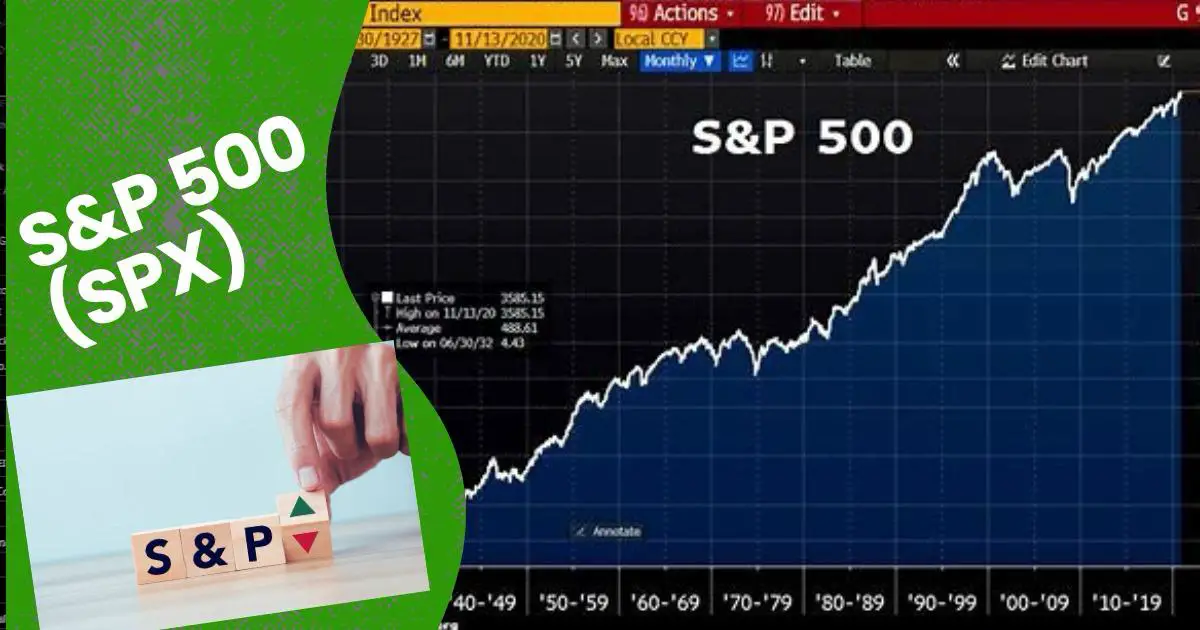The S&P 500, often referred to by its ticker symbol “SPX,” is one of the most widely recognized and followed stock market indexes in the world. It serves as a benchmark for the overall health of the U.S. economy and a barometer for the performance of large-cap American companies. For investors, traders, and financial professionals, understanding the S&P 500 is essential for making informed investment decisions and assessing market conditions.

What is the S&P 500 (SPX)?
The S&P 500, or Standard & Poor’s 500 Index, is a market-capitalization-weighted index comprising 500 of the largest publicly traded companies listed on U.S. stock exchanges, such as the New York Stock Exchange (NYSE) and the NASDAQ. The index covers a wide range of industries, including technology, healthcare, financial services, consumer goods, energy, and utilities. By providing a snapshot of the overall market performance, the S&P 500 is a key indicator of the economic health and growth potential of the U.S.
How is the S&P 500 Constructed?
The S&P 500 is constructed using a market-capitalization-weighted methodology, which means that companies with larger market capitalizations have a more significant influence on the index’s overall performance. Market capitalization is calculated by multiplying a company’s share price by its total number of outstanding shares. Thus, companies like Apple, Microsoft, Amazon, and Alphabet (Google’s parent company) have a substantial impact on the S&P 500 due to their massive market caps.
The composition of the S&P 500 is not static. The index is regularly reviewed and adjusted by the S&P Dow Jones Indices, which oversees its maintenance. Companies may be added or removed from the index based on a set of criteria, including market capitalization, liquidity, domicile, and sector representation. This dynamic nature ensures that the S&P 500 remains a relevant reflection of the U.S. large-cap market.
Significance of the S&P 500
The S&P 500 is significant for several reasons:
- Market Benchmark: The S&P 500 serves as a benchmark for the performance of U.S. stocks. Many mutual funds, exchange-traded funds (ETFs), and institutional investors compare their returns to the S&P 500 to gauge their investment success.
- Economic Indicator: As the S&P 500 comprises companies from various sectors of the economy, its performance is often seen as an indicator of the overall health of the U.S. economy. A rising S&P 500 suggests economic growth and investor confidence, while a declining index may indicate economic troubles or investor pessimism.
- Investment Vehicle: The S&P 500 is also a popular investment vehicle. Investors can gain exposure to the S&P 500 through various index funds and ETFs that track its performance. These funds offer diversified exposure to the U.S. stock market, making them attractive to both retail and institutional investors.
Factors Influencing the S&P 500
Several factors influence the performance of the S&P 500:
- Economic Data: Macroeconomic indicators such as GDP growth, unemployment rates, inflation, and consumer confidence can significantly impact the S&P 500. Positive economic data generally boosts investor sentiment, leading to higher stock prices.
- Corporate Earnings: The financial performance of the companies within the S&P 500 plays a crucial role in determining the index’s direction. Strong earnings reports from major companies can drive the index higher, while disappointing results can have the opposite effect.
- Monetary Policy: Actions taken by the Federal Reserve, such as changes in interest rates or quantitative easing programs, can influence the S&P 500. Lower interest rates generally encourage borrowing and investing, leading to higher stock prices. Conversely, higher interest rates can dampen investor enthusiasm and lower stock prices.
- Geopolitical Events: Political instability, trade tensions, and international conflicts can introduce uncertainty into the markets, affecting the S&P 500. For instance, trade disputes between major economies or political unrest in key regions can lead to increased market volatility.
- Market Sentiment: Investor sentiment, driven by both rational analysis and emotional reactions, can cause fluctuations in the S&P 500. Bullish sentiment leads to rising stock prices, while bearish sentiment results in declines.
Historical Performance of the S&P 500
Historically, the S&P 500 has delivered solid returns over the long term, making it a cornerstone of many investment portfolios. Over the past several decades, the S&P 500 has averaged an annual return of about 7-10% when adjusted for inflation. This performance has made it an attractive option for investors seeking growth through exposure to the broader U.S. economy.
However, the S&P 500 has also experienced periods of significant volatility, such as the dot-com bubble in the early 2000s, the global financial crisis of 2008, and the COVID-19 pandemic in 2020. During these times, the index experienced sharp declines, highlighting the importance of a long-term investment horizon and a well-diversified portfolio.
Investing in the S&P 500
Investors can access the S&P 500 through various financial instruments:
- Index Funds and ETFs: These funds aim to replicate the performance of the S&P 500 by holding a portfolio of stocks that matches the index’s composition. Popular options include the SPDR S&P 500 ETF (SPY), the Vanguard S&P 500 ETF (VOO), and the iShares Core S&P 500 ETF (IVV).
- Futures and Options: More advanced investors may choose to trade S&P 500 futures and options contracts, which provide leveraged exposure to the index’s movements. These instruments can be used for speculation or hedging purposes.
- Mutual Funds: Many mutual funds track the S&P 500 or use it as a benchmark. These funds are managed by professional portfolio managers who seek to outperform the index by selecting individual stocks or employing various strategies.
The S&P 500 (SPX) is a fundamental component of the global financial markets, serving as a benchmark, an economic indicator, and a popular investment vehicle. By understanding its structure, the factors influencing its performance, and the various ways to invest in it, investors can make more informed decisions and potentially achieve their financial goals. Whether you are a seasoned investor or a newcomer to the markets, the S&P 500 remains an essential index to watch and understand.